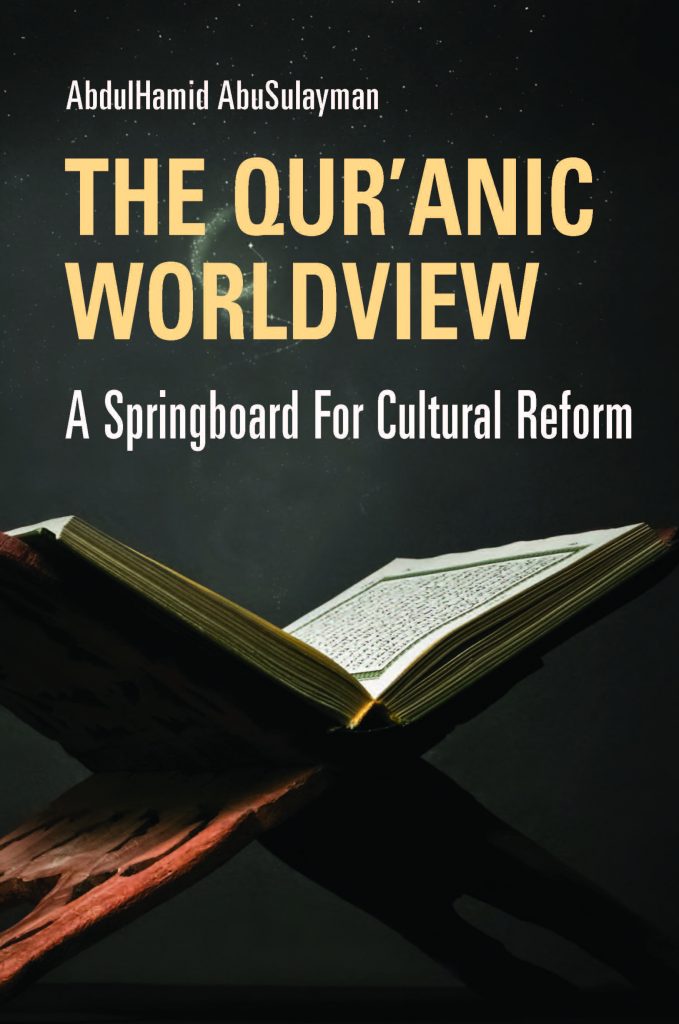
The Qur’anic Worldview: A Springboard for Cultural Reform This is a carefully reasoned, positive, and largely reflective work. Looking back at the various stages of Islamic historical development, AbuSulayman puts forward a thesis that focuses on the recovery of what is termed the Qur’anic worldview. By this is meant an ethical, monotheistic, and purposeful perspective on the world and those within it. Our faith will only be complete when we have become utterly sincere in our love for God, a love expressed in a pure, passionate love for goodness and truth in this world. It was the strict internalization of this perspective and close adherence to the principles of the Qur’an which AbuSulayman contends, played a key factor in galvanizing the devout and intensely God-conscious followers of fledgling Islam to achieve the successes that they once did, the profound historical and global impact of which is still the subject of much study and admiration today. The rebirth of Islamic identity through this Qur’anic worldview is the key requirement of our times and a prerequisite for any future healthy and viable development of Muslim societies. AbdulHamid AbuSulayman is President of the International Institute of Islamic Thought (IIIT) USA; President of the Child Development Foundation, USA; and former Rector of the International Islamic University, Malaysia. He is also the author of numerous works including: The Islamic Theory of International Relations: New Directions for Islamic Methodology and Thought (1987); Crisis in the Muslim Mind (1987); Marital Discord: Recapturing the Full Islamic Spirit of Human Dignity (2003); Revitalizing Higher Education in the Muslim World (2007) as well as several books and papers in Arabic. AbuSulayman has also delivered numerous papers and lectures and has been instrumental in organizing many international symposia, conferences and seminars. (2007)
Paperback: 978-1–56564–365-9 / Price: $12.95 Hardback: 978-1–56564–366-6 / Price: $22.95 eBook: 978-1–56564–780-0 / Open Access Size: 6x9 inches Pages: 204 Year of Publication: 2011
